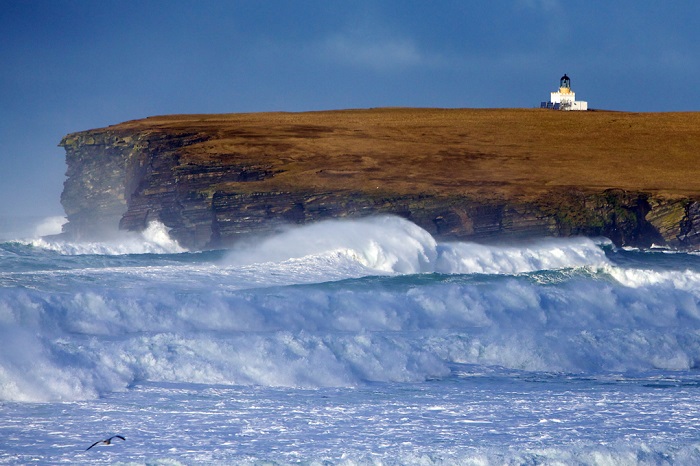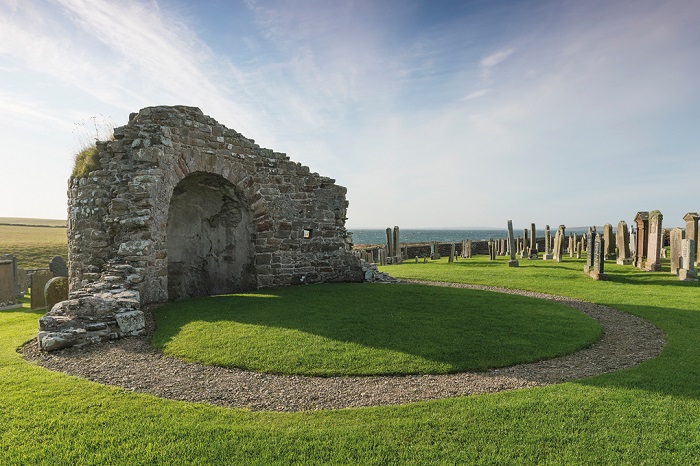Orkney boasts a captivating history as the heart of a powerful Viking Earldom and even today, centuries later, it’s clear to see the Vikings’ impact across the archipelago.
These infamous Norsemen were so influential that you can still follow their footsteps around Orkney, and visit the places and landmarks of their historic power centres.
Take Birsay, for example, where you can look out onto the same seas and views upon which the first Viking invader ships would have appeared in the 8th century.
Orkney’s transformation into a dominant Viking Earldom is a colourful period depicted at length in the Orkneyinga Saga, one of the islands’ most fascinating historical documents.
From Norse King Harold Fairhair’s conquest of Orkney, to the battles of Sigurd the Mighty and later Earls, various stories of revenge, power and exile unfold.
And at various points around the islands you’ll find the remnants of key places and stories depicted in the Saga, alongside evidence of everyday Viking life and settlements.
At the Earl’s Bu in Orphir, for example, the remains of an important hall and farm indicate that the site was once a much larger and high-status Viking settlement. It’s here that the notorious Sweyn Asliefsson is said to have murdered Sweyn Breastrope in the Saga.
Directly opposite, you’ll find the ruins of the Round Church, also mentioned in the Saga. Modelled on the Church of the Holy Sepulchre in Jerusalem (the Vikings were very well-travelled), it’s one of only two round medieval churches in Scotland.
At Deerness on the eastern coast, another important Viking estate, a scenic walk up the side of cliffs to the Brough reveals outlines of Viking buildings, including a defensive wall, a well and Pictish chapel.
Meanwhile, in Kirkwall – Orkney’s vibrant capital and former Viking town – the bones of the beloved Earl Magnus, revered as one of Orkney’s two saints, are interred at the 12th century Norse cathedral of St Magnus.
Originally a small settlement, Kirkwall took over from Birsay as the chief power centre for the Orkney earls in the 12th century. You can still see signs of its Viking past, most notably in the remains of St Olaf’s Kirk – a 16th century gateway in St Olaf’s Wynd is all that’s left.
Kirkwall is now also home to the Orkney Museum, which as well as depicting the Viking era, tells the story of Orkney from its rich Neolithic past up to modern day.
Take the chambered tomb of Maeshowe in Stenness, for example. It dates back to 4,000 years before the Vikings, but bears the marks of the Viking crusaders who took shelter here in the mid-1100s.
These and other landmarks throughout the islands show how the Viking Earls who ruled Orkney have forever left their mark on these enchanting Scottish islands.
Uncover Orkney’s Viking history
Now, you can explore Orkney’s colourful past by following Destination Orkney’s new Viking itinerary, dedicated to visiting historical Viking sites around the islands.
It includes stops at Maeshowe and the St Magnus Cathedral amongst other places, covering 55 miles of Orkney during the one-day itinerary.
As you visit captivating Viking attractions and soak up picturesque views along the way, Orkney’s fascinating and rich history will come to life.
Download Destination Orkney’s new Viking itinerary here and start planning your adventure today.



